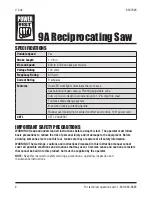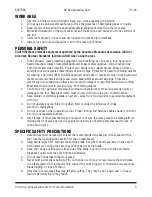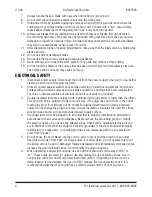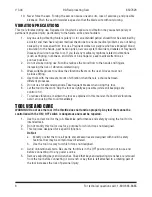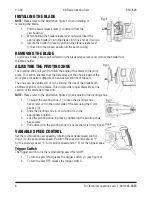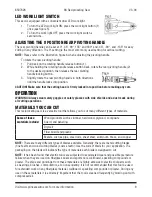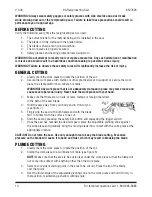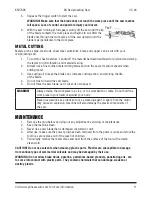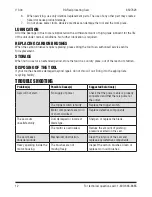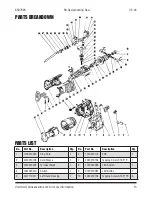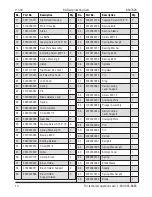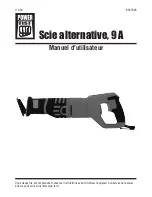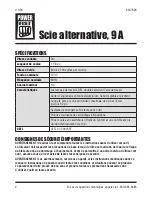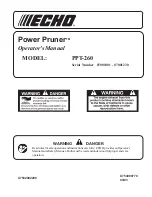
Visit www.princessauto.com for more information
9
8507626
V 3.04
9A Reciprocating Saw
LED WORK LIGHT SWITCH
This saw is equipped with a convenient dual LED work light.
1. To turn the LED work light ON, press the work light button (1)
once (see figure 5).
2. To turn the work light OFF, press the work light switch a
second time.
ADJUSTING THE 8 POSITION REAR PIVOTING HANDLE
The rear pivoting handle can be set at 0°, 45°, 90°, 135° and 180° and -45°, -90°, and -135° for easy
cutting in any direction. The 0° setting is the most commonly used setting for vertical cutting.
NOTE:
Please refer to the illustration figure 6 when adjusting the pivoting handle.
To rotate the rear pivoting handle:
1. Pull back on the rotating handle release button (1).
2. While holding the rotating handle release button back, rotate the rear pivoting handle (2)
to the desired position, then release the rear pivoting
handle locking button.
3. Slightly rotate the rear pivoting handle in both directions
until the handle locks into position.
CAUTION! Make sure that the cutting head is firmly locked into position before making any cuts.
OPERATION
WARNING! Always wear safety goggles or safety glasses with side shields and a dust mask during
all cutting operations.
MATERIALS YOU CAN CUT
This reciprocating saw is a versatile tool that allows you to cut many different types of materials.
Some of these
materials include:
Wood products such as lumber, hardwood, plywood, composite
board, and paneling.
Drywall
Fiber board and plastic
Metals, such as pipe, steel rods, sheet steel, aluminum, brass, and copper
NOTE:
There are many different types of blades available. Generally, there are metal cutting blades
(fine teeth) and wood cutting blades (coarse teeth). Use the correct blade for your application. The
packaging on the blade will indicate the type of materials each blade is designed to cut.
NOTE:
It has been found that electric tools are subjected to accelerated wear and possible premature
failure when they are used on fiberglass boats and sports cars, wallboard, spackling compounds or
plaster. The chips and grindings from these materials are highly abrasive to electric tool parts such
as bearings, brushes, commutators, etc. Consequently, it is not recommended that this tool be used
for extended work on any fiberglass material, wallboard, spackling compounds or plaster. During any
use on these materials it is extremely important that the tool is cleaned frequently by blowing out with
compressed air.


